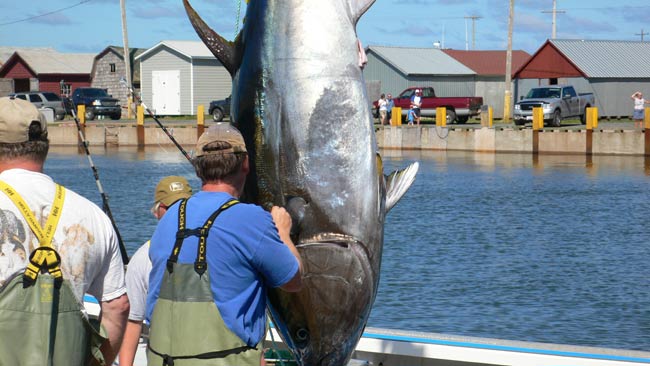Sushi Often Not What You Think

That tuna in your sushi might be an endangered species, a new study finds.
Some genetic detective work by scientists has shown that bluefin tuna, an endangered fish, regularly gets put on the plates of sushi eaters in New York and Colorado.
"When you eat sushi, you can unknowingly get a critically endangered species on your plate," said Jacob Lowenstein, a graduate student affiliated with the American Museum of Natural History in New York and Columbia University. "But with an increasingly popular technique, DNA barcoding, it is a simple process for researchers to see just what species are eaten at a sushi bar."
Bluefin are three species of large, fast-moving, high-energy tuna that can cover enormous distances in the ocean. All three—northern, southern, and Pacific bluefin tuna—are highly sought by fishermen because a single fish can garner tens of thousands of dollars. But over-fishing has brought populations into sharp decline, and western stocks of northern bluefin tuna are estimated as 10 percent of pre-exploitation numbers, and eastern stocks are following suit because of rampant illegal fishing.
The International Commission for the Conservation of Atlantic Tunas recently voted to lower bluefin fishing quotas. The species will be considered for a complete ban on international trade at the March meeting of the Convention on International Trade in Endangered Species.
To trace the source of meat, or even leather goods, scientists can use DNA barcoding, which uses a short genetic marker from the sample to identify it.
All the fish in the tuna group (the Thunnus genus) are more closely related to each other than humans are to chimpanzees, which has made previous attempts to identify illegally caught fish by their DNA tricky.
Get the world’s most fascinating discoveries delivered straight to your inbox.
But instead of comparing differences in the DNA sequences, as is typically done, Lowenstein and his colleagues looked at similarities in a section of one particular gene.
Lowenstein and colleagues used DNA barcoding to identify the kind of fishes labeled "tuna" in one Denver and 30 New York City restaurants. Almost half of the restaurants did not accurately label the kind of tuna sold, and only 14 of the samples used for this study were listed on the menu by a specific name like bigeye tuna, albacore, or bluefin.
The study, detailed in the journal PLoS ONE, also found that while the most prevalent tuna found in sushi is bigeye (30, or almost half, of the 68 samples collected for this research), nearly a third of the tuna was bluefin (3 Pacific, 12 northern, and 7 southern bluefin tuna). Only eight of the 22 bluefin samples were labeled "bluefin" on menus, and nine of the restaurants that sold the bluefin did not label it as such on the menu, although restaurants that did advertise bluefin were accurate in their representation and charged more for the sushi.
"It is very difficult to get reliable information about the species you are eating, especially since the FDA's approved market name for all eight species of Thunnus is simply 'tuna'," says Lowenstein.
George Amato, Director of the Sackler Institute for Comparative Genomics at AMNH said that handheld ID devices could easily perform DNA barcoding, helping conservationists track endangered species.
- Is Sushi Safe to Eat?
- 10 Species You Can Kiss Goodbye
- Images: Endangered Wildlife



